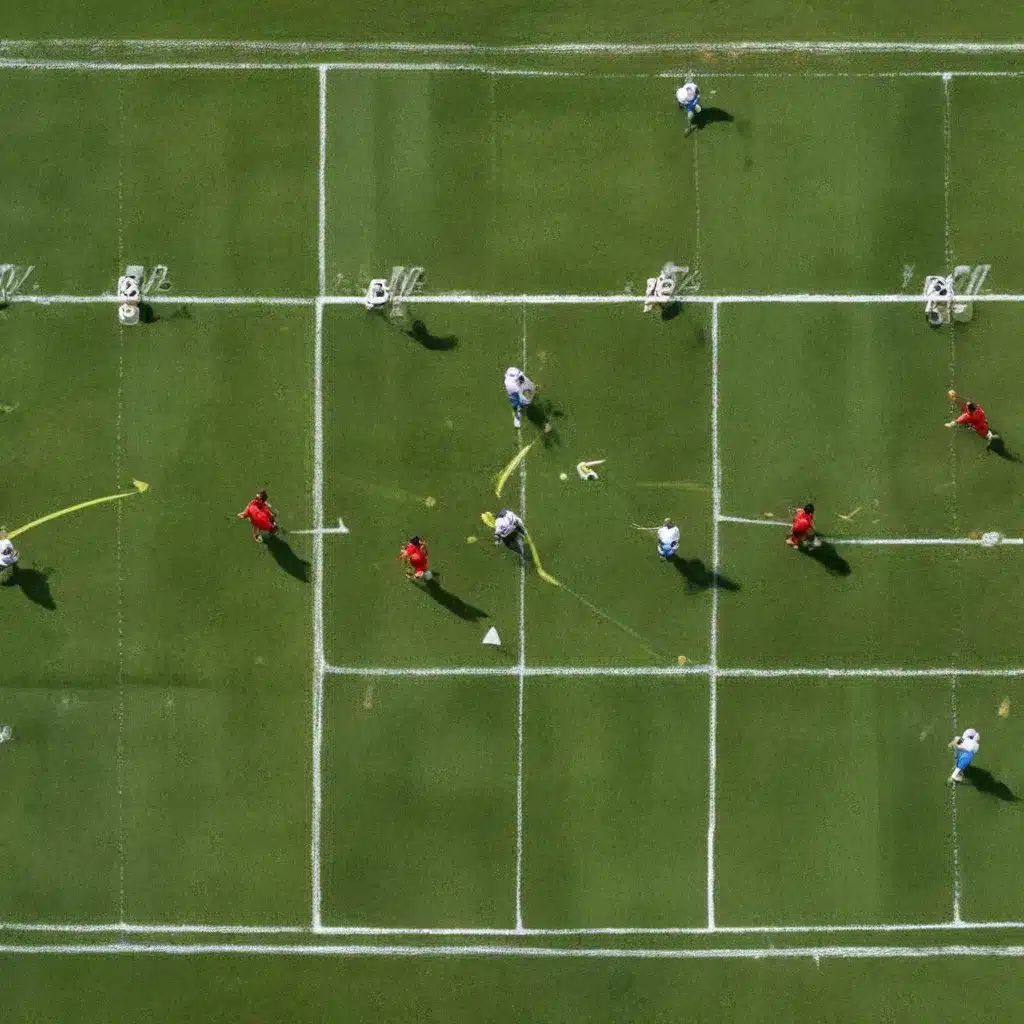
As a seasoned rugby professional with expertise in various aspects of the game, I’m often asked about the critical role of wingers in defensive coverage. The backfield, that expansive area behind the defensive line, is a crucial zone that must be vigilantly monitored and protected. In this article, I’ll delve deep into the nuances of winger positioning and share insights on how to effectively cover this vital space.
Tracking Opponents’ Movements
At the heart of a winger’s defensive duties is the ability to track the opposing players’ movements with laser-like focus. Maintaining tight marking on the opposing winger is paramount, as they possess the speed and agility to exploit any gaps in coverage. Wingers must be constantly aware of their direct opponent’s positioning, anticipating their runs and cutting off passing lanes before they develop.
The concept of “marking your man” may seem straightforward, but it requires exceptional spatial awareness and a keen understanding of the game’s ebb and flow. Wingers must seamlessly transition between offensive and defensive responsibilities, ensuring they are always in the right place at the right time.
Prioritizing Defensive Duties
It’s a common misconception that wingers are primarily offensive players, tasked with scoring tries and setting up their teammates. While these attacking attributes are undoubtedly valuable, the modern game demands that wingers contribute just as much, if not more, on the defensive side of the ball.
Wingers must strike a delicate balance, prioritizing their defensive duties without sacrificing their ability to impact the attack. This requires discipline, mental toughness, and a deep understanding of the game’s tactical nuances. Knowing when to press the opposition and when to maintain a disciplined defensive shape is a critical skill that separates the good wingers from the great.
Spatial Awareness and Positioning
Effective defensive coverage in the backfield is not just about marking an individual player; it’s about understanding the bigger picture and anticipating the opposition’s next move. Wingers must possess exceptional spatial awareness, constantly scanning the field and positioning themselves to cover the most dangerous areas.
The concept of the “pendulum” is a useful visual aid in understanding the winger’s defensive responsibilities. As outlined in the Rugby Slate article, the winger on the side of the ball must shift up to join the defensive line, while the fullback covers the space behind. Meanwhile, the winger on the opposite side must slide across to cover any gaps that may emerge.
This intricate dance of positioning and movement requires excellent communication and coordination with the fullback and other defenders. Wingers must be constantly aware of their teammates’ locations, adjusting their own positioning accordingly to maintain a cohesive defensive unit.
Anticipating and Intercepting Passes
Wingers who excel in the backfield are not only adept at marking their direct opponent but also possess the ability to read the opposition’s intentions and anticipate their passing patterns. By closely monitoring the ball carrier’s body language and the positioning of their teammates, wingers can often identify passing lanes before they materialize.
Timing is everything when it comes to intercepting passes. Wingers must strike a delicate balance between pressing the ball carrier and maintaining their defensive shape. A well-timed jump or a subtle shift in position can mean the difference between a turnover and a potentially devastating breach in the defensive line.
Transitioning from Defense to Attack
Perhaps one of the most underappreciated aspects of a winger’s role is their ability to quickly transition from defense to attack. When a winger successfully intercepts a pass or wins the ball back, they must instantly shift their mindset and look to initiate a counterattack.
This ability to seamlessly transition between defensive and offensive responsibilities is a hallmark of the game’s elite wingers. By anticipating the opposition’s moves and positioning themselves accordingly, wingers can capitalize on turnovers and create scoring opportunities for their team.
Adapting to Different Game Scenarios
The defensive duties of a winger are not limited to open-play situations. Wingers must also be adept at adjusting their positioning and responsibilities to handle set-piece scenarios, such as defending against counterattacks and covering aerial threats on corners and free kicks.
In the face of counterattacks, wingers must be quick to track back and cover the space behind the defensive line, working in tandem with the fullback to snuff out the danger. On set pieces, wingers must be vigilant in marking their opponents, while also being ready to react to any loose balls or deflections that could lead to scoring opportunities.
Adaptability is a crucial trait for wingers, as they must be prepared to handle a wide range of game scenarios and make split-second decisions to protect the backfield.
Conclusion
In the fast-paced and dynamic world of rugby, the winger’s role in defensive coverage cannot be overstated. From tracking opposing players to maintaining spatial awareness and anticipating passing lanes, the responsibilities of a winger extend far beyond the traditional notions of scoring tries and breaking the line.
By mastering the art of backfield defense, wingers can become the unsung heroes of their teams, providing the crucial cover and support that allows the entire defensive unit to thrive. It’s a challenging yet immensely rewarding aspect of the game, and one that separates the good wingers from the great.
So, if you’re a winger looking to elevate your game, or a coach seeking to develop well-rounded players, I encourage you to dive deep into the intricacies of defensive positioning and backfield coverage. It’s a journey that will not only improve your skills on the pitch but also deepen your appreciation for the nuances of this beautiful sport.
And remember, for all your club’s rugby needs, be sure to visit the Aberdeenshire RFC website – a hub of information, resources, and community support for players and fans alike.
